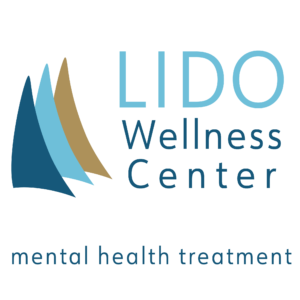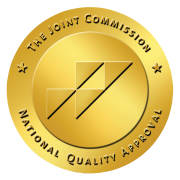How to Combat Negative Self-Talk
What Is Negative Self-Talk?
Negative self-talk is less of a conscious decision and more of a background hum that starts to feel like truth.
It’s that voice in your mind, constantly whispering, saying you’re not enough, not ready, not worthy. Sometimes, it has been so ever-present we forget that it is not supposed to be there. However, the damage it does is constant—it’s a mental static that drowns out clarity and confidence.
Neuroscientists call this phenomenon automatic negative thoughts (ANTs), and these thought-pests thrive in the neural pathways we’ve paved through repetition and emotional reinforcement. Our brains, as wonderful and fascinating as they are, can sometimes be counterproductive.
Just like clickbait on our news feed, our brains are wired to prioritize threats—evolutionary leftovers meant to keep us alive in caves, but now they just keep us up at night.
The negative self-talk is our brain thinking that it is helping us combat danger.
Breaking Down Negative-Self Talk
In its simplest form, negative self-talk is the brain mistaking criticism for motivation. Psychologists like Aaron Beck and Martin Seligman point out that negative thoughts often stem from cognitive distortions—patterns of irrational thinking like catastrophizing (“This will ruin everything”) or labeling (“I’m a failure”).
It’s not that we’re broken. We’ve rehearsed these negative scripts so often that they feel like facts.
But they’re not.
Why Do I Talk to Myself This Way?
This is the million-dollar question. Why do we, these marvels of biology and consciousness, end up sounding like our worst enemies? Our biology and psychology tell the story. The amygdala, that almond-sized worrier in the brain, is designed to spot danger.
When it misfires—thanks to past traumas, cultural programming, or simply being human—it keeps us in fight-or-flight mode, scanning for emotional threats and whispering, “You’re not safe.” Add in neuroplasticity. Since the brain can reshape itself to reinforce thoughts and beliefs, this repeated negative self-talk becomes a physical pathway down which our thoughts travel.
There’s also the voice of shame. Brené Brown’s research tells us that shame thrives in secrecy and silence. When negative self-talk echoes unspoken fears of rejection, inadequacy, or failure, we assume the voice is ours.
But often, it’s borrowed. It comes from parents, teachers, or peers, whose judgments we internalized before we had the language to push back. Recognizing that is step one.

Practical Tips to Stop Negative Self-Talk
If you want to stop negative self-talk, you’ll need a toolbox. It’s less about making it go away and more about putting it in its correct place—learning when and how to challenge it.
- Name It to Tame It: Psychologist Dan Siegel says giving your thoughts names (“Oh, there’s ‘self-hating Steve again”) creates distance and helps regulate emotion.
- Interrogate the Evidence: Treat your negative thoughts like unreliable witnesses. Ask, “Is this actually true?”
- Rewrite the Script: Flip the narrative. Instead of “I’ll never get this right,” try “I haven’t figured this out yet, but I’m working on it.”
- Focus on Process, Not Perfection: Shift from judging results to acknowledging effort. Praise the act of showing up.
- Anchor in the Present: Mindfulness techniques—breathing exercises, grounding, or simply noticing your surroundings—can derail spirals of negativity.
How Do I Stop Negative Thoughts About Myself?
Again, you don’t stop negative thoughts as much as you learn to interrupt their momentum. It’s like traffic control—you can’t stop every car, but you can direct the flow. Neuroimaging studies show that practicing self-compassion actually shrinks the amygdala over time and strengthens connections to the prefrontal cortex. Consistency matters. Mantras work (it’s science).
Start by catching the negative thought before it runs away with you. Ask, “Is this thought helpful?” or “Would I say this to someone I love?” If not, it’s a signal to change your thought. Develop a mantra—something grounded like, “I’m doing the best I can.” And if that feels too big, borrow psychologist Kristin Neff’s advice: simply say, “This is hard, and I’m not alone.”
Because you’re not. It’s an act of reframing what is actually happening in your life.
What Does Reframing Negative Thoughts Look Like?
Reframing isn’t about slapping a motivational poster over a mental crack in the wall. It’s about tilting the perspective. The crack becomes a view of the light outside. Cognitive Behavioral Therapy (CBT) has popularized cognitive restructuring, which involves identifying distortions and rewriting them to be more balanced. The goal isn’t toxic positivity. It’s accurate optimism—thoughts that are hopeful without denying reality.
For example, instead of thinking, “I’m terrible at relationships,” you reframe it to, “I’m learning how to communicate better, and that takes time.” This shift activates the prefrontal cortex, the brain’s rational decision-maker, helping calm the emotional hijacking of the amygdala. It’s less about erasing the thought and more about questioning its authority.
Getting Help with Negative Self-Talk
Negative self-talk isn’t a character flaw. Our brains are doing what they are supposed to, maybe at the wrong time. And patterns can be rewired. Science tells us that thoughts influence neural pathways, emotions, and even immune responses.
Changing them isn’t quick, but it is possible—with awareness, practice, and sometimes professional support. If the voice in your head feels too loud, there’s no shame in reaching out to someone who knows how to turn down the volume.
If you’re struggling with negative self-talk, call us at Lido Wellness Center in Newport Beach, California. Our team can help you untangle those mental knots and help you work on reframing your thoughts to find a new approach to life. You don’t have to figure this out alone—sometimes, the bravest thing is asking for help. Call today: 949-541-8466.

